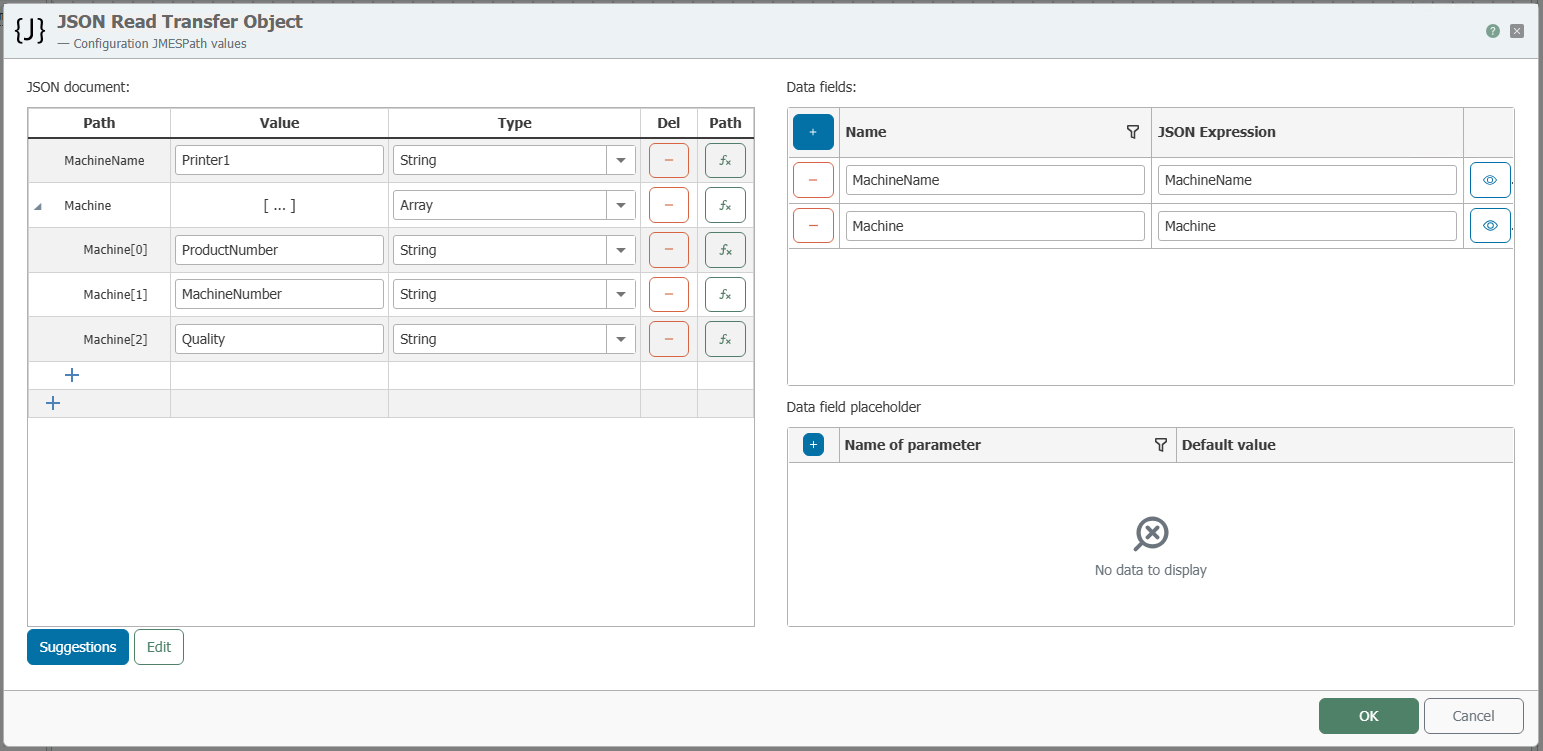JSON Read Transfer Object
With the JSON transfer object as a simple data exchange format, you can evaluate, change or create formatted texts or data in JSON. Create a JSON transfer object within the connection as described. A plug-in configuration is not necessary. You can configure the transfer object directly within the connection as described. The JSON expression is “JMESPath”.

JSON Read Transfer Object
After double-clicking on the transfer object, set the following properties:
| JSON document | In this area you can define the JSON to read. The button “Edit” is for editing the raw/source data of the JSON. The button “suggestions” searches the connection for already executed sessions and JSON files. If a JSON document was found, you can take it as template. |
| Data fields | You can add data fields to read data of the JSON elements through the runtime. Click a value of the JSON document and use the “right arrow” or the “F+” button to add a field from the JSON. |
| JSON placeholders | JSON placeholders are made to add variables inside the JSON document. Inside of the JMES path expression, the variables are written in curly brackets. For example: {MyPlaceholder} |
A tree structure is defined in the editor of the JSON tree as follows:
{
"key":"value",
"some":[
{"name":"one","value":1},
{"name":"two","value":2},
{"name":"three","value":3}
]
}